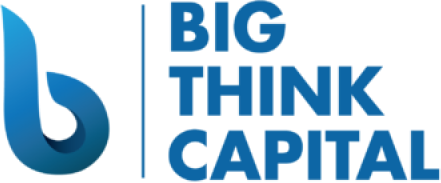That sinking feeling you get when you check your bank account is a familiar one for many business owners. You see the day’s sales come in, only to watch a significant chunk vanish moments later to cover your merchant cash advance. It can feel like you’re working for the MCA provider instead of for yourself. This financial pressure is relentless and can make running your business feel unsustainable. The good news is that you don’t have to stay stuck in this position. The question of how can I get out of a merchant cash advance is the first step toward finding a real solution. This article is your practical roadmap, designed to walk you through your options for negotiation, refinancing, and building a healthier financial future for your company.
Key Takeaways
- Understand your agreement, then negotiate. Review your merchant cash advance contract, total cost, and risky clauses. Use this information to negotiate lower payments or a temporary pause so your business can breathe.
- Escape the daily payment cycle by refinancing. Replace your high-cost MCA with a traditional loan, SBA loan, or line of credit that offers predictable monthly payments and lower rates.
- Build a stronger financial strategy for the future. Improve your cash flow, trim unnecessary expenses, and build an emergency fund so you are less likely to need another MCA.
What is a Merchant Cash Advance?
If you’ve found yourself with a Merchant Cash Advance (MCA), you’re not alone. It’s a type of financing where a company gives you a lump sum of cash in exchange for a percentage of your future credit and debit card sales. For many business owners, especially those who might not qualify for a traditional bank loan, an MCA can seem like a quick and easy solution to a cash flow problem. The application process is often fast, and the money can hit your account in days.
However, this convenience often comes with a steep price. Understanding exactly what an MCA is and how it works is the first step toward finding a way out of what can become a difficult debt cycle. These financial products are not loans in the traditional sense, which means they aren’t always subject to the same regulations, a distinction that has significant implications for your business.
How MCAs Differ from Traditional Loans
The biggest difference between an MCA and a traditional loan is how you pay it back. A loan comes with a set repayment schedule and a fixed interest rate. You know exactly how much you owe each month and for how long. An MCA, on the other hand, is technically a sale of your future revenue. The MCA provider takes a fixed percentage of your daily credit card sales until the advance is paid back in full, plus their fee. This repayment method can feel flexible—on slow sales days, you pay less. But because it’s tied directly to your revenue, it can also make it incredibly difficult to manage your cash flow and plan for the future. This structure is also why MCAs aren’t legally considered loans in many states, allowing providers to bypass lending laws and usury caps.
Uncover Hidden Costs and Daily Payments
This is where things can get really tricky. Instead of an Annual Percentage Rate (APR), MCAs use something called a “factor rate.” A factor rate of 1.4 means you’ll pay back $1.40 for every $1 you received. While that might not sound too alarming at first, when you calculate the effective APR, the numbers are often staggering. It’s not uncommon for the APR on an MCA to range from 40% to over 350%. These extremely high costs are one of the biggest dangers of MCAs. The daily or weekly payments can quickly drain your bank account, leaving you with little working capital to run your business and forcing many owners to take out another MCA just to stay afloat.
Know Your Contract Terms and Obligations
Before you plan your exit, you need to understand exactly what you signed.
Start by reviewing your MCA agreement and finding:
- The total amount you received and total payback amount.
- The factor rate and how payments are calculated.
- Any confession of judgment or similar clauses that limit your rights.
- Whether you signed a personal guarantee.
Even though MCAs are structured to avoid some lending rules, you still have rights. Courts and regulators are paying closer attention to aggressive MCA practices, and some states treat certain MCAs more like loans.
Knowing what is in your contract and how your state treats MCAs can give you leverage when you negotiate, refinance, or seek legal help. Don’t be afraid to reach out to the provider to ask for clarification on terms or even try to renegotiate.
Evaluate Your Current MCA Situation
Before you can map out your escape route, you need to understand exactly where you are. Taking a clear-eyed look at your merchant cash advance agreement is the first, most critical step. It might feel overwhelming to revisit the paperwork, but this is where you reclaim your power. By breaking down the terms, costs, and potential risks, you can move from a place of stress to a position of strength. Let’s walk through how to assess your MCA so you can build a smart, effective exit strategy.
Review Your Agreement and Total Costs
First, find your MCA contract and read it from start to finish. I know it’s probably the last thing you want to do, but it’s essential. Pinpoint the total amount you received, the factor rate, and the total payback amount. The difference between what you received and what you owe is the true cost of the advance. If the numbers aren’t clear, contact the MCA provider and ask for a complete breakdown. Understanding these figures is the foundation for any MCA negotiation or refinancing plan you pursue.
Spot the Red Flags and Risk Factors
MCAs are notorious for their high costs, often disguised by factor rates instead of APRs. A 1.4 factor rate might not sound scary, but it can translate to an APR of over 100%. This is one of the biggest red flags. Another one to watch for in your contract is a “confession of judgment.” This clause essentially waives your right to defend yourself in court if the MCA company decides to sue you for non-payment. Recognizing these predatory terms is crucial because they reveal the true risk your business is facing.
Understand Your Rights as a Borrower
While MCAs are structured to sidestep traditional lending laws, that doesn’t mean you’re without rights. Some MCA practices can be considered predatory or unlawful, and courts are increasingly scrutinizing these agreements. Depending on your state, some consumer protection laws may offer a shield for small business owners. It’s important to know that the legal landscape is shifting. Some jurisdictions are beginning to reclassify certain MCAs as loans, which grants you more legal protection. Researching your state’s specific regulations can give you leverage and help you understand your options.
Negotiate with Your MCA Lender
If your merchant cash advance is straining your finances, the thought of talking to your lender can be stressful. But ignoring the problem won’t make it disappear. In fact, being proactive is one of the most powerful moves you can make. MCA providers are in the business of collecting payments, and they’d often rather work with you on a solution than see you default entirely. A default means they have to spend time and money on collections, which isn’t ideal for anyone.
Approaching the conversation as a strategic business negotiation, not a plea for help, can shift the dynamic. Before you pick up the phone, get your facts straight. Gather your financial documents, understand exactly how much your revenue has dropped, and be ready to explain your situation clearly. This preparation shows you’re a serious business owner looking for a viable path forward. Your goal is to find a middle ground that allows you to keep making payments while giving your business the breathing room it needs to recover.
Open the Lines of Communication
The first step is to call your MCA provider. Don’t wait until you’ve already missed payments. Reach out as soon as you see trouble on the horizon and explain that your business is facing a downturn. Be prepared to show them proof. This isn’t just about saying sales are down; it’s about demonstrating it with bank statements or sales reports. Having clear documentation adds weight to your request and shows you’re being transparent. Ask them directly what options are available for merchants in your situation. Many lenders have hardship programs but may not advertise them. By opening a clear line of communication, you turn a potential conflict into a collaborative problem-solving session.
Propose a Modified Payment Plan
Once you’ve explained your situation, it’s time to propose a solution. Don’t just wait for the lender to dictate new terms. Go into the conversation with a specific request for a modified payment plan. You could ask to have your daily or weekly payments temporarily lowered to align with your current revenue. Another option is to request a short-term pause on payments, often called forbearance, to give you a month or two to get your cash flow back on track. Lenders are often willing to consider these adjustments because a modified plan is better for them than a complete default. Present your proposal as a temporary measure that will allow you to successfully fulfill your obligation in the long run.
Work with a Professional Negotiator
If your lender is unwilling to listen or their proposed terms are still unmanageable, it might be time to bring in a professional. An experienced business debt attorney or a qualified financial advisor can negotiate on your behalf. These professionals understand the legal nuances of MCA agreements and know what pressure points to use. They can often achieve better results, such as a more significant payment reduction or a favorable settlement, because they remove the emotion from the conversation and focus purely on the legal and financial realities. Hiring a qualified lawyer isn’t admitting defeat; it’s making a strategic decision to protect your business’s interests when the stakes are high.
Explore Settlement Options and Strategies
If you’re already behind on payments and restructuring the deal isn’t an option, you can try to negotiate a settlement. A settlement involves offering to pay a lump sum that is less than the total amount you owe to close out the account. Lenders might agree to this because pursuing legal action to collect the full amount is expensive and time-consuming, with no guarantee of success. This strategy typically requires you to have a significant amount of cash available to make the lump-sum payment. Because settlement negotiations can be complex, this is another area where working with a professional negotiator can be incredibly valuable. They can help you determine a realistic offer and handle the back-and-forth with the MCA provider.
Explore Your Refinancing Options
If you feel trapped by daily payments and high costs, refinancing your merchant cash advance is one of the most effective ways to regain control of your finances. The goal is to replace that expensive MCA with a more traditional form of financing that offers better terms, lower rates, and predictable payments. This move can free up your daily cash flow and put you on a stable path toward growth. Let’s walk through some of the best options available to help you make this switch.
Traditional Bank Loans
Think of a traditional term loan as the classic financing option. You receive a lump sum of cash upfront and pay it back in regular, fixed installments over a set period. Unlike an MCA’s daily withdrawals, these loans typically have predictable monthly payments and much lower interest rates. This stability makes budgeting significantly easier. While banks often have stricter eligibility requirements, such as a strong credit score and business history, securing a traditional business loan can be the key to breaking free from the MCA cycle and funding your business on your own terms.
SBA Loan Programs
Don’t let the “government” part intimidate you. Small Business Administration (SBA) loans are designed to help businesses like yours succeed. The SBA doesn’t lend money directly; instead, it guarantees a portion of the loan made by a partner lender, like a bank or Big Think Capital. This guarantee reduces the lender’s risk, which often translates into excellent terms for you—think lower interest rates and longer repayment periods. Using an SBA loan to refinance a high-cost MCA is a smart strategy to lower your payments and improve your company’s financial health for the long haul.
Business Lines of Credit
A business line of credit offers a more flexible way to manage your finances. Instead of a one-time lump sum, you get access to a pool of funds you can draw from as needed, up to a set limit. You only pay interest on the amount you actually use. This can be a perfect tool for paying off an MCA while also having a safety net for future expenses. A business line of credit gives you the freedom to handle cash flow fluctuations without being locked into the rigid, daily payment structure of a merchant cash advance.
Debt Consolidation Programs
If you’re juggling an MCA along with other high-interest debts, a debt consolidation loan can simplify everything. This approach involves taking out one new loan to pay off all your existing ones. The result? You’re left with a single, manageable monthly payment, often at a much lower interest rate than what you were paying on the MCA. This strategy not only makes your finances easier to manage but can also save you a significant amount of money over time. It provides a clear, straightforward path to paying down your debt and getting your business back on solid ground.
Protect Your Business Legally
When you’re struggling with a merchant cash advance, your focus is likely on cash flow and negotiations. But it’s just as important to understand the legal side of things. Taking the right steps can protect your business—and your personal assets—from aggressive collection tactics. This isn’t about starting a fight; it’s about knowing your rights and using them to find a better resolution. When conversations with your MCA provider hit a wall, having a legal strategy can make all the difference.
Know When to Seek Legal Help
If you feel like you’re in over your head, it’s probably time to call a professional. You should seek legal help if your MCA provider is threatening a lawsuit, you believe the terms of your agreement are predatory, or if they simply refuse to negotiate in good faith. Don’t just hire any lawyer; find one who specializes in commercial finance or MCA agreements specifically. They can review your contract for unfair clauses, represent you in negotiations, and advise you on the best course of action to protect your business from asset seizure or other aggressive tactics. Think of it as bringing in an expert to level the playing field.
Manage UCC Filings and Multiple Lenders
When you take on funding, lenders often place a UCC-1 filing on your business. This is essentially a public notice that they have a lien on your assets, like your equipment or accounts receivable. If you have multiple MCAs, you likely have multiple UCC filings. This might sound bad, but it can sometimes give you leverage. The rule is “first to file, first in line,” meaning the first lender gets paid back first if you default. If your assets aren’t enough to cover that first lien, subsequent lenders get nothing. This reality can make those other funders more willing to negotiate a settlement rather than risk a total loss.
Understand Your Bankruptcy Options
No business owner wants to think about bankruptcy, but it’s a tool that exists to provide a fresh start. If you’ve exhausted all other options and your business is at risk of failing under the weight of MCA payments, it’s worth understanding what bankruptcy could mean for you. There are different types, such as Chapter 11, which allows for reorganization while you continue operating, or Chapter 7, which involves liquidating assets to pay off debts. This is a serious step with long-term credit implications and should only be considered a last resort. A qualified bankruptcy attorney can help you determine if this is the right path for your specific situation.
Safeguard Your Business Assets
One of the biggest risks with an MCA is the personal guarantee. Most agreements require you to sign one, which means if your business can’t pay, the MCA company can legally pursue your personal assets—your home, car, and savings accounts. This blurs the line between your business and personal finances in a dangerous way. Review your contract immediately to confirm if you signed a personal guarantee. If you did, speak with an attorney about strategies to protect your personal assets. This is a critical step in containing the financial damage and ensuring a business debt doesn’t turn into a personal crisis.
Create Your Exit Strategy
Getting out of a merchant cash advance is a huge step, but the work doesn’t stop there. To truly break the cycle, you need a solid plan for the future. Creating a long-term exit strategy is about building financial habits that protect your business from ever needing a high-cost MCA again. It’s about shifting from reactive problem-solving to proactive financial management.
This means taking a hard look at how your business operates, from the money coming in to the money going out. By focusing on a few key areas, you can build a more resilient and profitable company. The goal is to create a strong financial foundation that supports sustainable growth, giving you access to healthier funding options when you need them. Let’s walk through the essential steps to build your strategy and secure your business’s future.
Master Your Cash Flow
Before you can make any changes, you need a crystal-clear picture of your company’s financial health. It’s time to get serious about managing your cash flow. Start by listing every single one of your debts—MCAs, business loans, credit cards, and any other obligations. Seeing the total amount you owe is often the wake-up call you need. Next, track your income and expenses meticulously for at least a month. This will show you exactly where your money is going. Once you have this data, you can set clear, achievable goals, like paying down a specific debt by a certain date or increasing your profit margin by a few percentage points.
Find Ways to Increase Revenue
Bringing more money in the door is a direct way to improve your financial standing. Think about both short-term wins and long-term growth. Could you run a promotion to attract new customers or launch a loyalty program to encourage repeat business? Improving your customer service can also lead to more sales over time. Beyond your current offerings, explore new revenue streams that fit your business model. This could mean adding an online store, forming strategic partnerships, or offering new products or services. The more diversified your income is, the less vulnerable you’ll be to market shifts or unexpected downturns.
Reduce Business Expenses
Just as important as increasing revenue is making sure you’re not letting money slip through the cracks. This is where a detailed business budget becomes your best friend. Go through your expenses line by line and challenge every cost. Are there subscriptions you no longer use? Can you negotiate better rates with your suppliers? Look for operational inefficiencies where you could save money, like optimizing your inventory or reducing utility usage. The goal isn’t to slash and burn, but to trim the fat and ensure every dollar you spend is working hard for your business. This financial discipline will free up cash to pay down debt and invest in growth.
Build an Emergency Fund
One of the main reasons businesses fall into the MCA trap is an unexpected expense they can’t cover. An emergency fund is your shield against this. Your goal should be to set aside three to six months’ worth of essential operating expenses in a separate, easy-to-access savings account. This might sound like a huge amount, but you can start small. Set up automatic transfers to your savings account each week or month, even if it’s just a small amount. This fund will give you peace of mind and, more importantly, options. When the unexpected happens, you can dip into your savings instead of turning to a high-cost cash advance.
Find Healthier Funding Alternatives
Once you have a plan to exit your merchant cash advance, it’s crucial to find funding that supports your business long-term. Healthier alternatives offer transparent terms and predictable payments, allowing you to focus on growth instead of just survival. Exploring options like equipment financing, invoice factoring, and traditional loans helps you build a stronger financial foundation. These solutions are designed to be partners in your success, not obstacles.
Equipment Financing
If you need to buy machinery, vehicles, or technology, equipment financing is a targeted solution. This loan is specifically for purchasing the assets your business needs to operate and grow. The best part? The equipment itself usually serves as collateral, which can make it easier to qualify for and result in better terms compared to unsecured loans. This lets you get the tools you need to increase revenue without tying up your working capital in a high-cost debt cycle. It’s a straightforward solution for a specific business need, helping you invest in your company’s future.
Invoice Factoring
Waiting on customers to pay can put a serious strain on your cash flow. Invoice factoring directly addresses this problem by letting you sell your outstanding invoices to a factoring company at a small discount. The company gives you a large percentage of the invoice amount upfront—often within a day or two. This isn’t a loan; it’s an advance on money you’ve already earned. It’s a great way to get immediate cash to cover expenses and seize new opportunities without taking on new debt. This method is ideal for B2B companies or any business with a longer sales cycle.
Traditional Business Loans
A traditional term loan provides a lump sum of cash upfront, which you repay in regular, fixed installments. Unlike an MCA’s fluctuating daily payments, a traditional business loan offers predictability, making budgeting much easier. Even if your credit isn’t perfect, many alternative lenders offer term loans with far more manageable rates than an MCA. Securing one can be the perfect way to pay off an existing MCA and replace it with a structured, affordable payment plan that supports your financial health. This approach gives you stability and a clear path forward.
Credit-Based Financing
For more flexibility, consider a business line of credit or an SBA loan. A business line of credit works like a credit card for your business—you get approved for a certain limit and can draw funds as needed. You only pay interest on the amount you use, making it a perfect tool for managing unexpected expenses. Meanwhile, SBA loans are government-backed and offer some of the best interest rates and repayment terms available. The long-term benefits are often well worth the more detailed application process for building a financially sound business.
Related Articles
- Understanding Merchant Cash Advances For Small Businesses – Big Think Capital
- How Inflation Affects Merchant Cash Advances For Small Businesses – Big Think Capital
- Manage Seasonal Fluctuations With Merchant Cash Advances – Big Think Capital
- Strategies For Leveraging Merchant Cash Advances In Inflation – Big Think Capital
- Navigating Small Business Loans Amid Rising Interest Rates – Big Think Capital
Frequently Asked Questions
I’m overwhelmed by my MCA payments. What’s the very first step I should take? Before you do anything else, find your original MCA agreement and read it carefully. Your first goal is to get a clear picture of the total amount you owe, the factor rate, and any clauses that might work against you, like a confession of judgment. Understanding the exact terms of your deal is the foundation for every other step, whether you decide to negotiate with the lender or explore refinancing options.
Is it actually possible to negotiate with an MCA company? Yes, it’s often possible. MCA providers are in the business of collecting money, and they generally prefer to receive modified payments rather than nothing at all. A default costs them time and legal fees to pursue. The key is to be proactive and approach them with a clear explanation of your financial situation, supported by documents like recent bank statements. This shows you’re serious about finding a workable solution.
What’s the main difference between refinancing and settling my MCA? Refinancing means you take out a new, healthier loan—like a traditional term loan or an SBA loan—and use that money to pay off the MCA completely. You’re essentially swapping expensive, high-pressure debt for a more manageable one with better terms. Settling, on the other hand, is an option if you’re already behind on payments. It involves negotiating to pay the MCA provider a one-time lump sum that is less than your total remaining balance to close the account for good.
I signed a personal guarantee. Does that mean my personal assets are at risk? Unfortunately, yes. A personal guarantee gives the MCA company the legal right to pursue your personal assets, such as your home or savings account, if your business defaults on the agreement. This is one of the most serious risks associated with MCAs. Because the stakes are so high, it’s critical to address the situation before it gets to that point and to consider speaking with a lawyer who specializes in commercial debt to understand how to best protect yourself.
How can I prevent my business from needing an MCA in the future? The best defense is building a strong financial foundation. Focus on mastering your cash flow by creating a detailed budget and tracking your income and expenses. From there, work on building an emergency fund that can cover three to six months of essential operating costs. Having this cash reserve acts as a buffer against unexpected expenses, giving you options other than high-cost financing when you’re in a tight spot.






